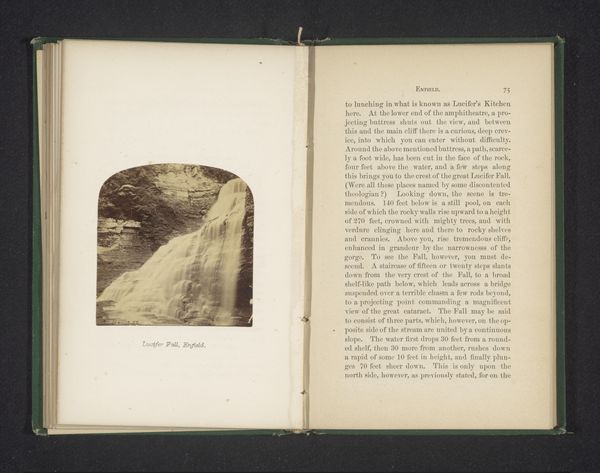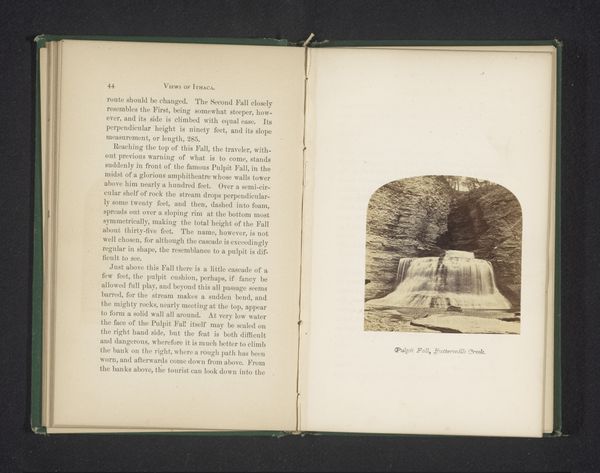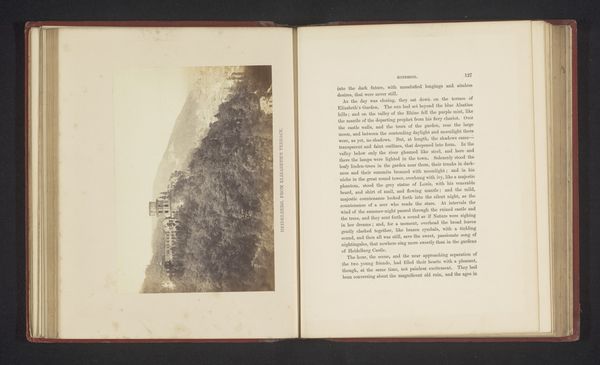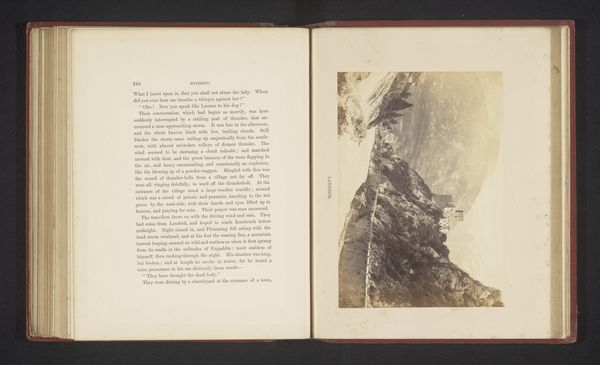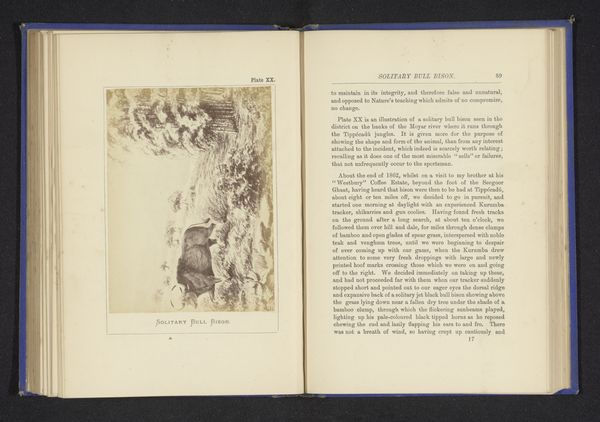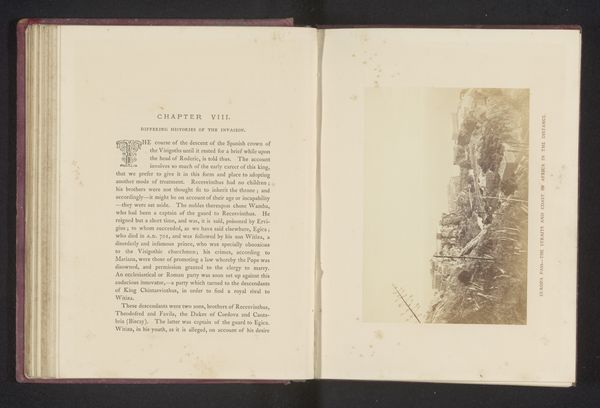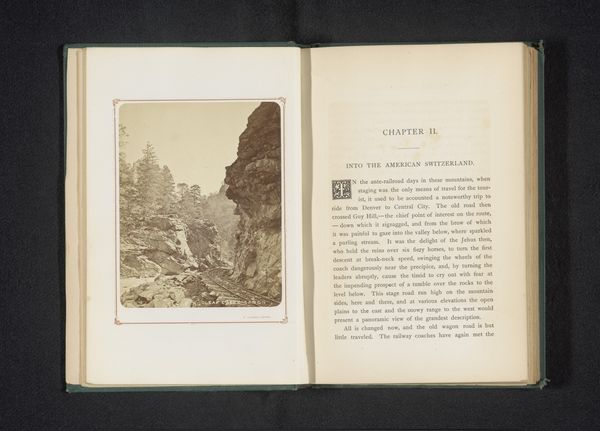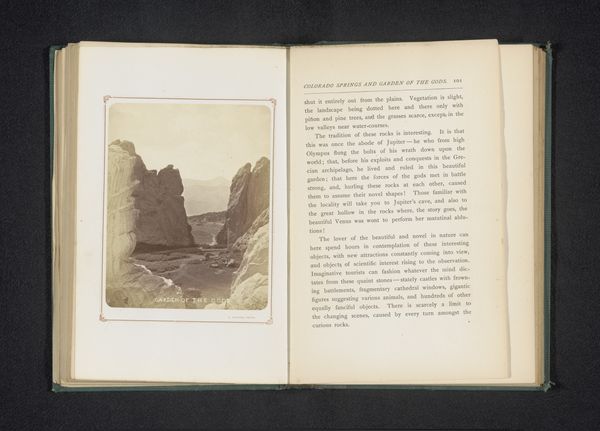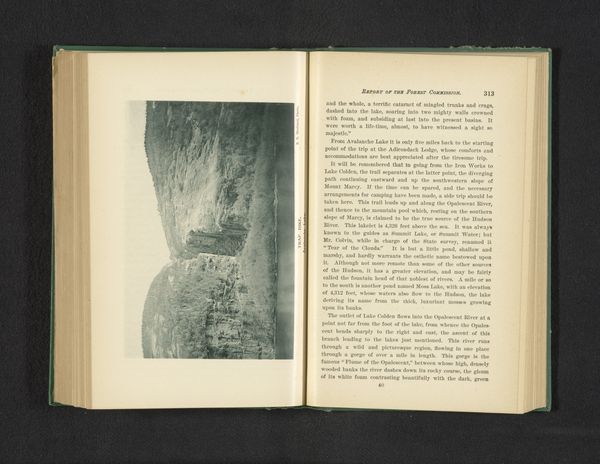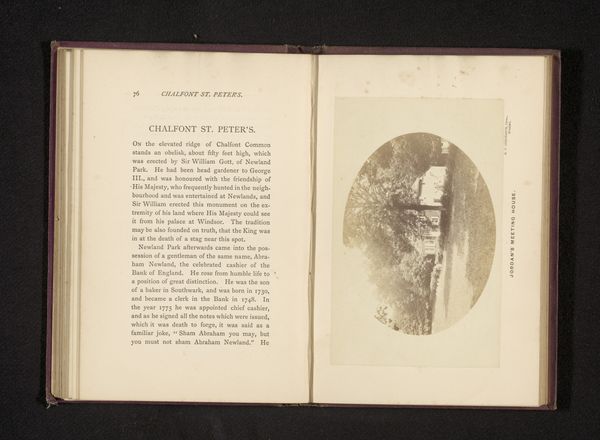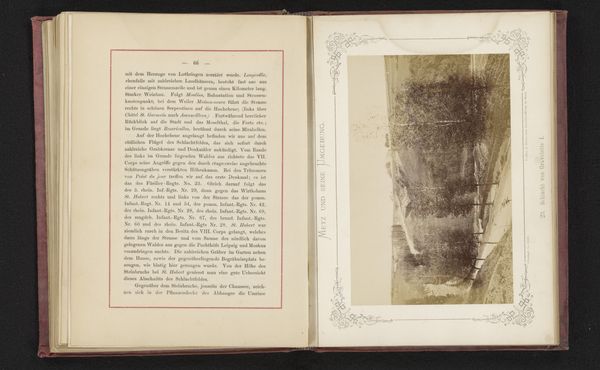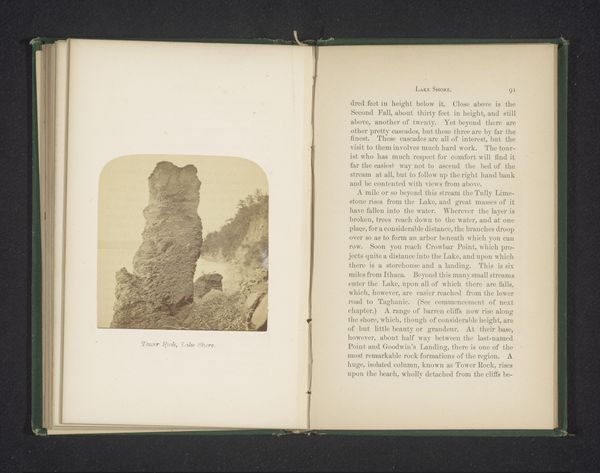
print, photography, albumen-print
#
16_19th-century
# print
#
landscape
#
waterfall
#
photography
#
hudson-river-school
#
albumen-print
Dimensions: height 80 mm, width 78 mm
Copyright: Rijks Museum: Open Domain
This small photograph, “Ithaca Fall, Fall Creek,” was created by J.C. Burritt at an unknown date. Likely made using the albumen print process popular in the 19th century, it starts with coating paper with egg white and then a silver nitrate solution, creating a surface sensitive to light. The negative is then pressed to the paper and exposed to sunlight, the silver reacting and darkening in proportion to the light that passes through the negative. This print captures Fall Creek's cascade, a site already touched by industry, powering mills with its waters. The albumen process, a product of industrial chemistry, made photography widely accessible, while the tonal range and texture of the print give the image a sense of depth and immediacy. This small photograph, reproduced as part of a bound book, collapses the grandeur of nature with human intervention and commodification. It’s a reminder that even the most seemingly untouched landscapes are shaped by labor, politics, and consumption.
Comments
No comments
Be the first to comment and join the conversation on the ultimate creative platform.
